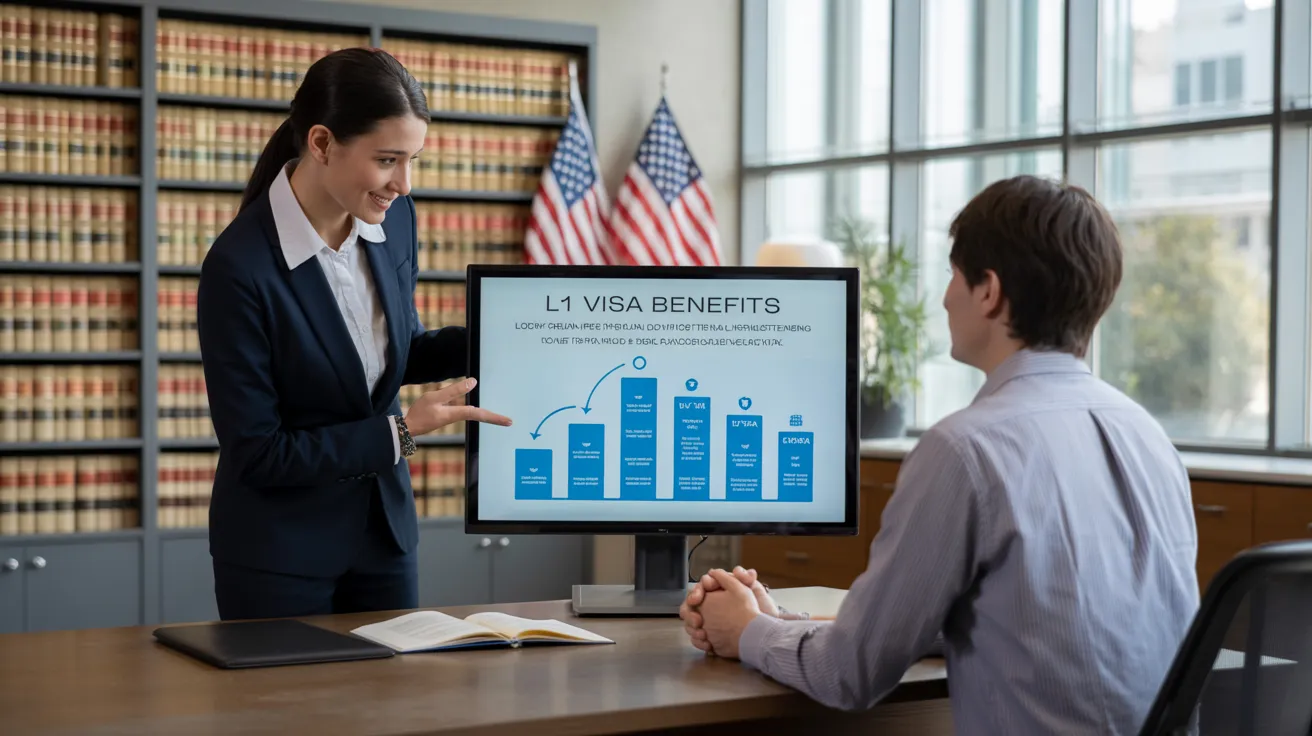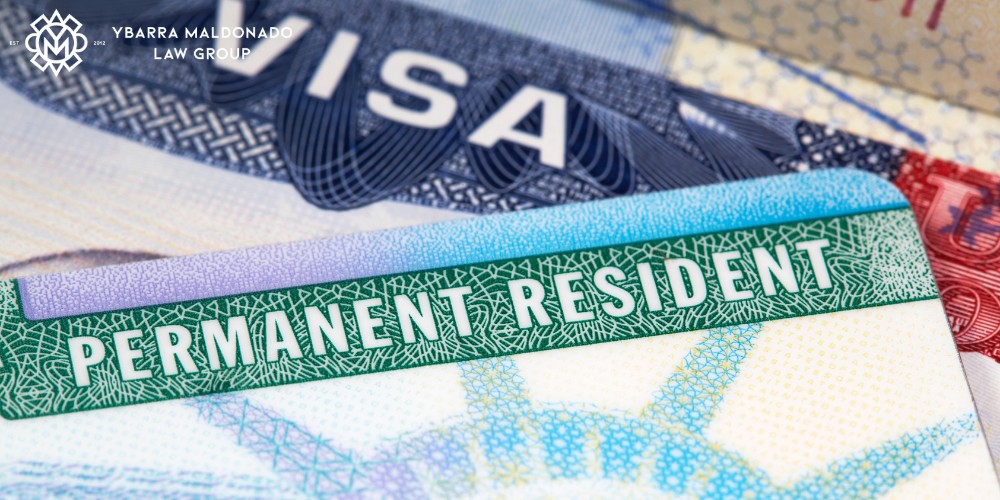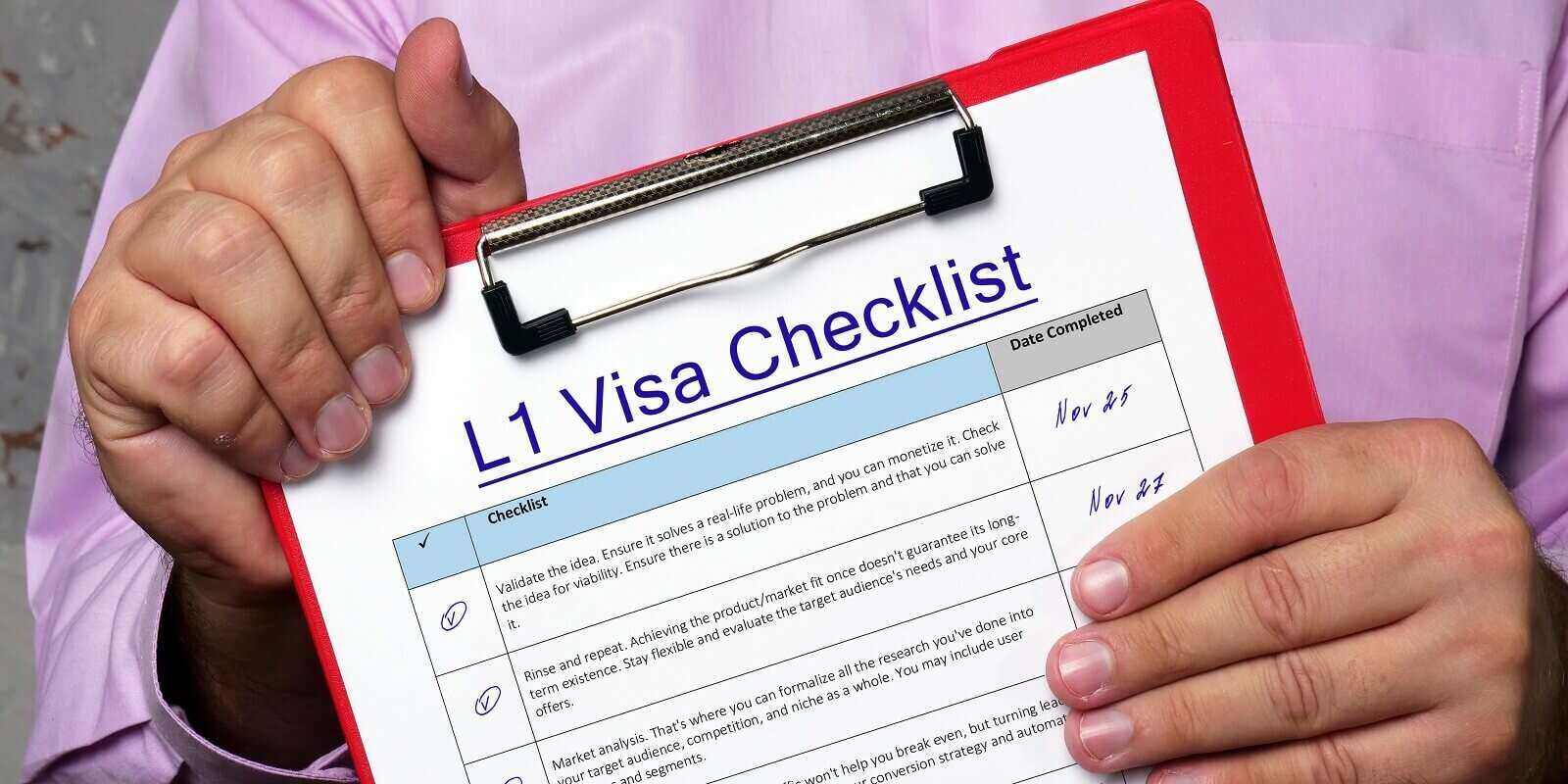Opening Opportunities: A Comprehensive Guide to the L1 Visa Process
The L1 visa process provides a vital path for international companies seeking to transfer vital workers across borders. Comprehending the subtleties of eligibility requirements, the differences in between L-1A and L-1B visas, and the details of the application procedure can substantially affect an applicant's success. Nevertheless, maneuvering this facility landscape is not without its challenges, and mindful attention to documentation and company sponsorship is vital. As we check out the vital parts of this procedure, the strategies for conquering prospective barriers will end up being obvious, revealing how notified preparation can open a globe of opportunities.
Recognizing the L1 Visa
Comprehending the L1 visa entails acknowledging its significance as an important device for multinational firms seeking to move proficient employees between global offices. This non-immigrant visa category assists in the activity of executives, managers, and specialized expertise employees to the USA, thereby enabling companies to keep functional continuity and harness global skill successfully. The L1 visa is divided into two main categories: L-1A for managers and executives, and L-1B for workers having specialized knowledge.The L1 visa offers an important function in boosting a firm's one-upmanship in the worldwide market. By enabling firms to move their essential workers, businesses can guarantee that vital tasks are managed by certified individuals that are already knowledgeable about the company's culture and operational processes. What Is L1 Visa. This inner transfer device not only promotes expertise sharing yet additionally promotes development and collaboration across borders.Moreover, the L1 visa is commonly favored for its relatively uncomplicated application process contrasted to other visa groups, as it enables for dual intent, permitting owners to pursue irreversible residency while on a short-term copyright. This attribute makes the L1 visa particularly appealing for both employers and employees, as it improves the path for skilled experts to establish long-lasting residency in the USA
Eligibility Standards
Qualification for the L1 visa pivots on a number of key requirements that guarantee both the employee and the employer meet certain certifications. This non-immigrant visa is created for multinational companies to move staff members from international offices to united state counterparts.Firstly, the employer has to be a certifying organization, which consists of a parent firm, branch, affiliate, or subsidiary of a united state company. The firm must have been doing organization for at least one year both in the united state and abroad. This ensures that the business has sufficient operational security and a genuine presence.Secondly, the worker has to hold a supervisory, executive, or specialized knowledge setting. For L1A visas, the applicant needs to show supervisory or executive credentials, while L1B visas concentrate on specialized expertise associated to the company's items, services, or procedures. Additionally, the staff member has to have functioned for the foreign entity for at least one continuous year within the last three years prior to their application.Lastly, the worker's duty in the U.S. need to line up with their previous setting, making certain that their skills and know-how are leveraged for the company's advantage.

Sorts Of L1 Visas
The L1 visa classification comprises 2 main types developed to facilitate the transfer of employees within multinational business: the L1A visa for managers and executives, and the L1B visa for staff members with specialized expertise. Each type serves unique functions and has details qualification criteria.The L1A visa is tailored for individuals that hold managerial or executive positions within a firm. This visa enables high-level workers to move to an U.S. branch, subsidiary, or affiliate of the very same company. Candidates for the L1A visa need to demonstrate that they have actually been utilized in a supervisory or executive capacity for at the very least one continuous year within the previous 3 years prior to their application. In addition, this visa provides a longer duration of remain, initially given for 3 years, with the opportunity of extensions for up to 7 years.In contrast, the L1B visa is intended for professionals with specialized expertise relevant to the business's products, solutions, or processes. To qualify, candidates should verify that their knowledge is important to the organization and that they have benefited at the very least one constant year within the last 3 years in a role that needed this specialized knowledge. The L1B visa is originally provided for three years, with extensions readily available for up to 5 years.Both visa types are essential for firms seeking to boost their international procedures by leveraging skilled personnel, thus advertising advancement and effectiveness within the U.S. market.
Application Process
Steering via the L1 copyright procedure entails several crucial steps that need to be carefully complied with to assure a successful outcome. The procedure begins with the U.S. employer, who have to initially establish qualification by showing a qualifying relationship with the international entity and verifying that the employee fulfills the particular requirements for the L1 visa classification being sought.Once qualification is confirmed, the employer initiates the process by filing Type I-129, the Request for a Nonimmigrant Employee, with the U.S. Citizenship and Immigration Solutions (USCIS) This type has to be come with by a detailed summary of the task responsibilities to be executed, the business structure of both the U.S. and foreign entities, and the worker's credentials. It's important to verify that all details is exact and full, as noninclusions or mistakes can bring about delays or denials.Upon authorization of the I-129 request, the next step entails the staff member requesting the L1 visa at a united state embassy or consulate in their home country. This stage requires the completion of Kind DS-160, the Online Nonimmigrant copyright, and setting up an interview. During the interview, the applicant has to present proof supporting their credentials and the company's petition.After the visa is given, the worker can enter the United States to work in the marked role. On the whole, mindful prep work and adherence to each action of the application process are vital for a successful L1 visa end result.
Needed Documents

Essential Types Needed
Maneuvering the L1 Visa process calls for mindful focus to the essential kinds and documentation needed for an effective application. The primary kind needed is the Form I-129, Request for a Nonimmigrant Employee, which have to be completed and submitted by the U.S. company (L1 Visa Requirements). This kind lays out the details of the work deal and the credentials of the worker looking for the L1 Visa.Alongside Form I-129, the applicant will certainly require to total Kind I-539 if coming with household participants are likewise using for visas. In addition, the employer must provide proof of the qualifying relationship between the U.S. entity and the foreign entity, frequently requiring the entry of company papers such as articles of consolidation or financial statements.Moreover, it is vital to consist of the L Classification Supplement to Kind I-129, which defines the sort of L Visa being asked for-- either L-1A for supervisors and execs or L-1B for staff members with specialized expertise. Applicants should ensure that all types are authorized and dated suitably, as insufficient entries can lead to hold-ups or rejections. Effectively setting up these essential types lays the structure for a smoother L1 copyright process
Sustaining Evidence Needs
Supporting documents is essential for a successful L1 copyright, as it confirms the insurance claims made in the petition. Candidates must offer a series of documents to show eligibility for the visa, which is categorized right into 2 key types: evidence of the qualifying partnership in between the U.S. and foreign entities and proof of the applicant's qualifications.To develop the connection, applicants ought to send documents such as company organizational graphes, monetary declarations, and proof of possession. These papers verify that the foreign firm has a qualifying partnership with the U.S. employer, whether as a moms and dad firm, subsidiary, branch, or affiliate.For the candidate's credentials, vital records include a detailed work letter from the international company, describing the applicant's job title, responsibilities, and period of work. In addition, academic qualifications, such as degrees and diplomas, should be given to verify the candidate's know-how in the pertinent field.
Company Sponsorship Files
Employer sponsorship papers play a necessary duty in the L1 copyright procedure, as they confirm the U.S. company's dedication to the applicant's work in the USA. These papers are essential for demonstrating the employer's qualification to sponsor the candidate for the L1 Visa.Key papers usually required consist of a comprehensive employment letter from the U.S. company, which outlines the work title, responsibilities, and contact us the nature of the employment partnership. In addition, the company has to supply proof of the firm's legitimacy, such as service licenses, tax returns, and organizational charts, illustrating the connection in between the U.S. entity and the international company.Furthermore, proof of the staff member's certifying relationship with the international firm is required. This may include documentation showing the worker's duty in the foreign entity, such as pay stubs, employment agreement, or efficiency examinations.
Usual Difficulties
Navigating the L1 visa procedure presents a number of usual obstacles that candidates need to understand (L1 Visa Qualifications). Secret concerns frequently consist of stringent paperwork needs, possible hold-ups in handling times, and the requirement for rigorous legal conformity. Recognizing these challenges can aid applicants much better prepare and alleviate dangers throughout their copyright trip
Documentation Requirements
The L1 copyright process frequently offers significant obstacles connected to paperwork needs. Candidates must supply extensive documentation to establish eligibility, which can result in complication and prospective delays. Key records include proof of a certifying connection in between the U.S. and international company, evidence of the applicant's employment history, and in-depth info concerning the work role in the U.S.One usual difficulty is gathering adequate evidence to demonstrate the nature of the qualifying relationship. Business often battle to existing clear business graphes or financial declarations that show the link in between the entities. Additionally, guaranteeing that letters of support from companies accurately show the candidate's task obligations and credentials is crucial, as unclear descriptions can result in denials.Another concern emerges from the requirement for thorough task descriptions that straighten with the L1 visa groups. Applicants have to articulate not only their current duty however also their managerial or specific understanding duties clearly. This demands a thorough understanding of both the applicant's setting and the regulative language made use of in L1 applications.
Handling Dead Time
Experiencing delays in processing times is a common obstacle faced by L1 visa candidates, typically resulting in disappointment and uncertainty. A number of aspects contribute to these hold-ups, including high application volumes, increased examination of applications, and administrative backlogs within the united state Citizenship and Migration Solutions (USCIS) Applicants may find that processing times can vary greatly relying on the service center handling their application, as each facility has its very own work and efficiency degrees. In addition, the intricacy of the candidate's case, such as the demand for substantial documentation or information, can further expand wait times.In some instances, concerns associated with the candidate's present migration standing or previous visa background may likewise cause extra hold-ups, as USCIS might call for additional evaluation or info. It is important for candidates to remain aggressive during this period, preserving open communication with their employers and legal representatives to resolve any type of prospective worries promptly.Understanding these processing time challenges can help L1 visa candidates get ready for possible delays and alleviate the influence on their change and job strategies. Persistence and diligence are essential virtues in navigating this detailed procedure.
Lawful Compliance Issues
Several L1 visa applicants experience lawful conformity problems that can complicate their journey towards getting the visa. Comprehending and adhering to the specific guidelines established by the U.S. Citizenship and Immigration Provider (USCIS) is important. Common difficulties include showing the certifying partnership between the foreign and united state companies, along with confirming that the candidate has the requisite specialized understanding or supervisory capacity.Additionally, candidates need to give thorough documentation describing their job responsibilities, corporate framework, and monetary viability of the united state entity. Poor or imprecise documentation can bring about delays and even denials. Companies should additionally ensure that they abide by labor laws, including wage and working condition standards, which can influence visa eligibility.Another usual issue involves maintaining compliance with the regards to the visa once approved. Changes in employment condition, work obligations, or company framework can require amendments to the visa, which otherwise attended to without delay can bring about lawful difficulties. As a result, staying educated about compliance needs and looking for lawful counsel when essential is vital to navigate the complexities of the L1 visa process effectively.
Tips for Success
Success in the L1 copyright process often depends upon careful preparation and attention to detail. To enhance your possibilities of authorization, start by thoroughly recognizing the qualification demands for both the L1A and L1B visa categories. Evaluate whether your position at the firm qualifies as supervisory, executive, or specialized understanding, as this categorization significantly impacts your application.Next, collect considerable documentation that substantiates your cases. This includes organizational graphes, detailed task summaries, and proof of the business's functional framework. Clear and succinct evidence of the certifying connection between the U.S. entity and the international entity is important. Confirm that all records are organized logically and presented in a professional way, as this shows your commitment and seriousness regarding the application.Engage the services of an experienced migration lawyer who focuses on L1 visas. Their proficiency can prove vital, directing you via complicated laws and ensuring that all paperwork adheres to present regulations. In addition, prepare for the interview by practicing response to usual questions and preparing to review your function and payments to the company detailed.
Frequently Asked Inquiries
Can Household Members Come With the L1 Visa Holder?
Yes, family members of L1 visa holders, including spouses and single kids under 21, can go along with the main visa owner. They may also apply for L2 visas, which enable them to reside in the United States.
Just How Lengthy Can I Keep on an L1 Visa?
The L1 visa allows initial stays of as much as three years, with the possibility of expansion. L1A visa holders might stay for a maximum of seven years, while L1B visa holders can continue to be for five years.
Can L1 Visa Holders Get a copyright?
Yes, L1 visa holders can make an application for an eco-friendly card. They may go after permanent residency through employment-based classifications, generally needing sponsorship from their company, supplied they satisfy the required certifications and documents requirements.
What Takes place if My L1 copyright Is Refuted?
If your L1 copyright is denied, you might get a notification describing the reasons for denial. You can seek to appeal the choice, reapply, or discover alternate visa alternatives based upon your scenarios.
Are There Any Type Of Travel Limitations With an L1 Visa?
An L1 visa typically enables for worldwide travel; nevertheless, re-entry to the U.S. L1 Visa Requirements. rests upon maintaining legitimate condition. Vacationers must ensure conformity with visa problems to avoid complications upon return
Verdict
